
Get expert insights on stair railing repair cost, including average prices, cost factors, and tips to save money. Plan your stair railing repair project with confidence.
The cost to install wainscoting averages $1,325, but typically ranges between $1,575 and $1,600, or $5 to $40 per square foot, depending on the material and style.


Expect to pay $5 to $40 per square foot for wainscoting materials.
MDF, plywood, and PVC materials can cost as little as $5 or $6 per square foot.
Mahogany is easily the most expensive wainscoting material at up to $40 per square foot.
Hiring a contractor to install wainscoting will cost anywhere from $50 to $125 per hour.
Adding wainscoting doesn’t directly increase the value of your home, but buyers often find it appealing.
The cost to install wainscoting averages $1,325, though it can range from $1,050 for a small area to $2,400 for a large room and expensive wood, like mahogany.
Wainscoting is paneling that lines an interior wall and is usually about waist-high. Installing this decorative trim is an excellent DIY project, although the cost can vary quite a bit. Wainscoting costs $5 to $40 per square foot, depending on the material you choose, the type of paneling, and the style.
Wainscoting is one of those unique jobs where, if you plan on upgrading a normal-sized space, the price of materials and labor can often be the same. The size of your space will affect both of those factors, but as long as you aren’t using a specialized material like mahogany or reclaimed wood, there are plenty of ways you can save money by adding this unique design element to your home.
Material choice and labor are two of the three chunks of the budget, with the third being the total size of the area you plan on paneling. The good thing about wainscoting is that once you get started, the work is fairly repetitive. The method you employ will be the same, whether it’s 20 square feet or 400 square feet.
| Size of Project | Total Material Cost - MDF/Plywood | Total Material Cost - Cedar |
|---|---|---|
| 50 square feet | $300–$600 | $400–$800 |
| 100 square feet | $600–$1,200 | $800–$1,600 |
| 150 square feet | $900–$1,800 | $1,200–$2,400 |
| 225 square feet | $1,350–$2,700 | $1,800–$3,600 |
Wainscoting involves placing slats of wood or other material against a flat surface (almost always either drywall or plaster) and painting over the wall paneling–if itisn’t wood. The most common wainscoting appearance is white squares or rectangles that make up the wainscoting, with the original wall color above it. This is usually about waist height, or around three feet from the ground.
| Type of Paneling | Price per Square Foot |
|---|---|
| Flat panel | $7–$10 |
| Board and batten | $7–$20 |
| Beadboard | $7–$20 |
| Shiplap | $2–$7.50 |
| Raised panel | $10–$30 |
| Overlay | $10–$40 |
The style of wainscoting you choose will depend on your taste and goal for the project. Someone might choose a flat panel design in order to keep the look clean and sleek. The opposite of that—while still looking modern—is an overlay design, where moldings are placed over an existing wall panel.
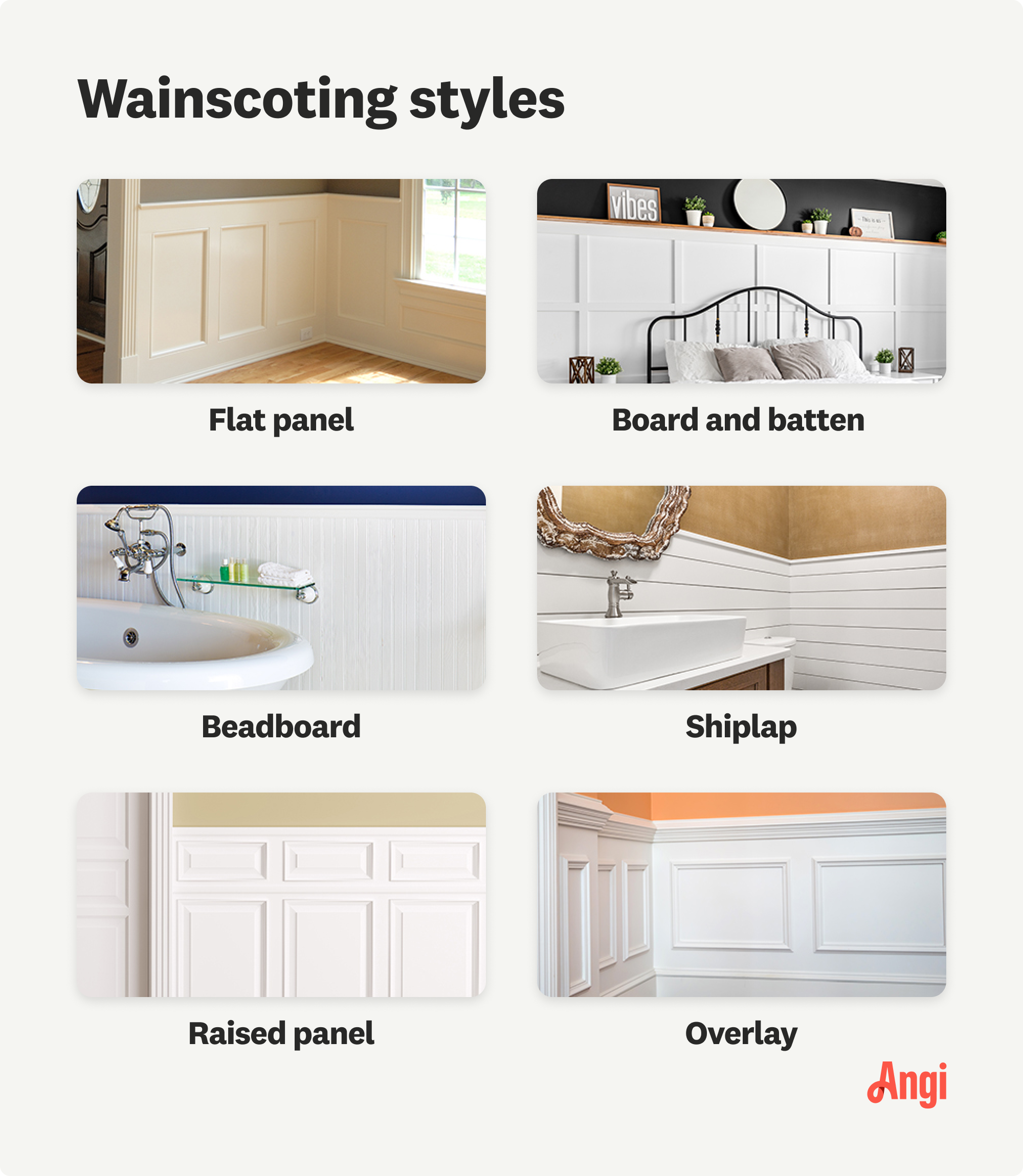
The material you choose is an important factor when installing wainscoting. If you want to save some money, and you like the classic New England white wainscoting, opt for MDF, vinyl, or PVC when picking materials. These materials look great once painted over and result in a timeless, Eastern seaboard aesthetic.
| Type of Material | Cost per Square Foot |
|---|---|
| MDF and plywood | $6–$12 |
| Vinyl | $5–$10 |
| PVC | $5–$9 |
| Cedar | $8–$16 |
| Redwood | $11–$19 |
| Oak | $12–$22 |
| Maple | $12–$21 |
| Mahogany | $26–$40 |
However, we all know that image of the paneled library or smoking lounge. These spaces—often found in hunting lodges, old Victorian homes, libraries, or finished basements—are usually designed and styled in a dark and warm way.
For those who want this style, your only option is unpainted wood. You could install a less expensive wainscoting and paint it black, but it will absorb light and won’t produce the inviting sheen of finished wood.
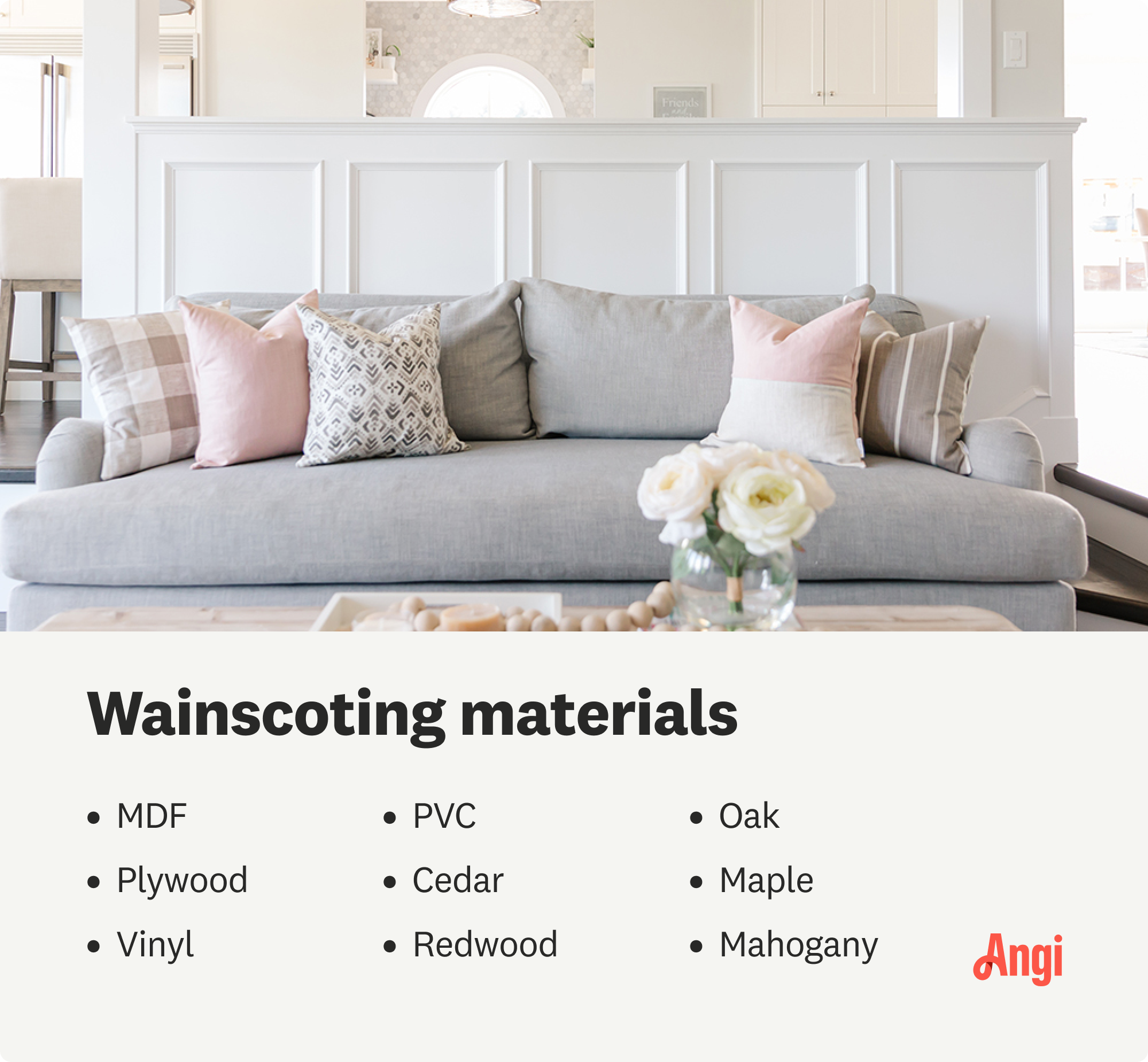
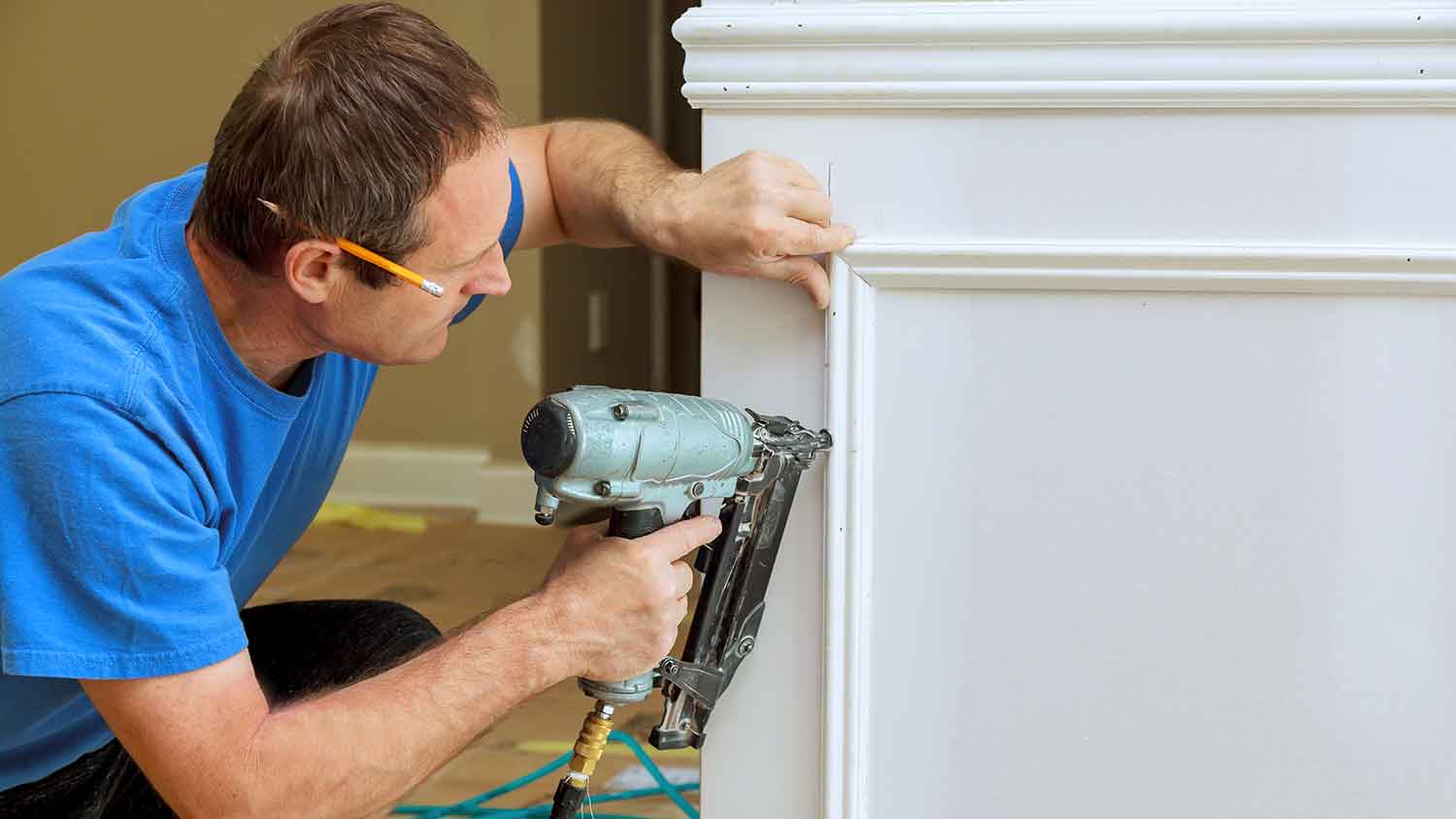
As you’ll see below, we think wainscoting can be an excellent DIY project, even if you’re new to larger undertakings. If you’re able to see the project through, great! On the flip side, you can hire a contractor to do everything, but expect to pay between $50 to $125 per hour. Most of the labor cost when installing wood paneling comes down to measuring, cutting, and applying the materials. Prep and finish jobs are fast bookends for this project.
Prepping a wall for wainscoting isn’t terribly involved. Generally, you want to follow a number of steps that simply ensures that the surface you’re working on is ready for your paneling, and to save you time if you’re DIYing the project:
Measure and mark the wall with a pencil. Alternatively, use painters tape to outline the panel placement.
Remove any baseboards.
If you’re hanging heavy wooden panels, locate and mark studs.
Fill any holes or cracks in the wall.
Apply a coat of primer to the wall.
If you’re hiring a carpenter, make sure to discuss prep with them before they start the job. Not all professionals will want every one of the above steps done.
Wainscoting is interesting because you can go about it one of two ways: laying full panels over the wall and placing raised rails on top of that panel, or installing the rails only, painting over the rails and the underlying wall.
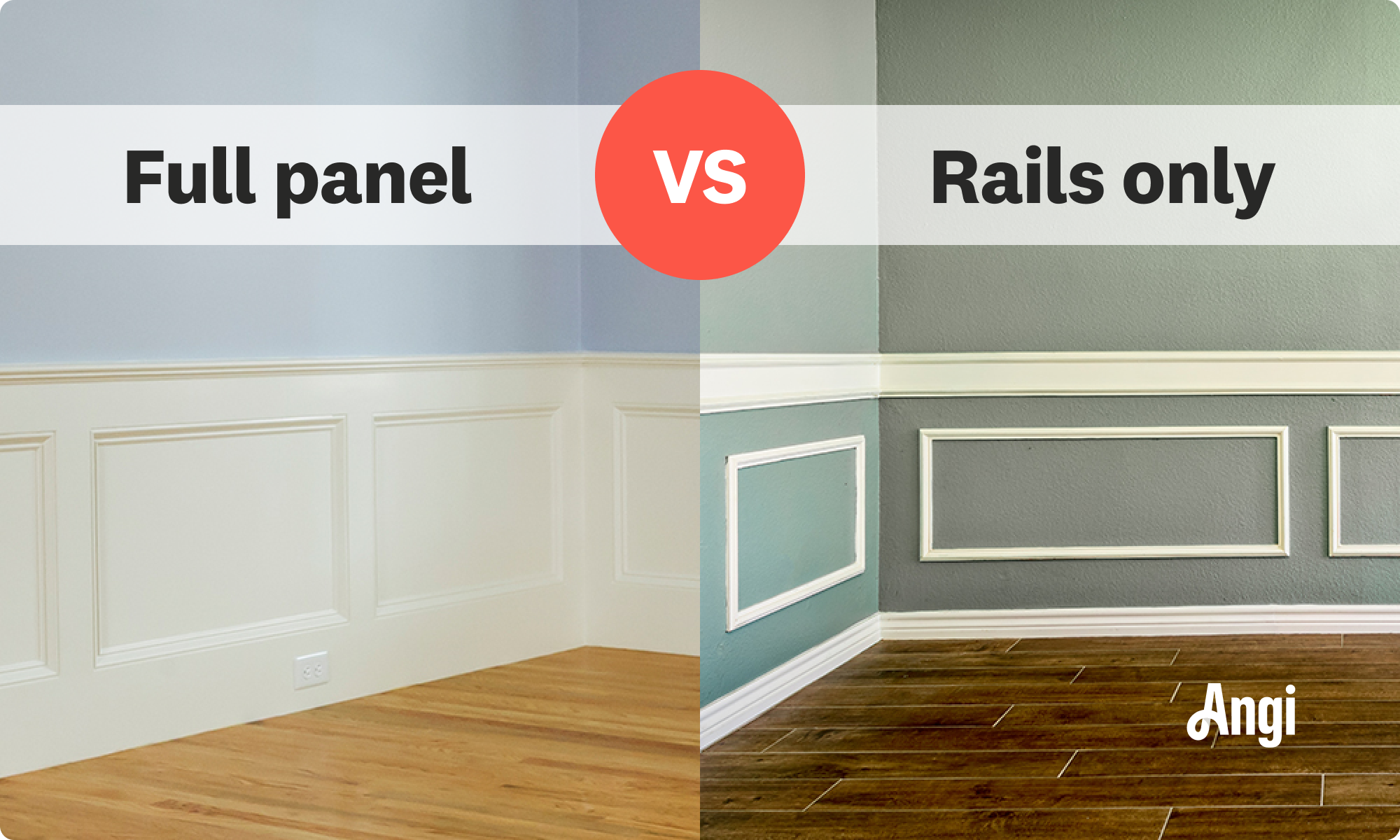
| Full Panel | Rails Only |
|---|---|
| More expensive | Costs less |
| Classic design | Easier to DIY |
| Darker and warmer | Brighter and cleaner |
Many DIYers choose to forgo the more dark academia, Old World style of full-paneled wood for the crisper, more modern white wainscoting. It’s easier to install, significantly less expensive, and can usually be done in a weekend.
Whether you choose to go with the full panel or painted rails, if you’re considering selling the full wood panels may not be the aesthetic a potential buyer is looking for. Removal is more expensive when compared to painted rails, which only need to be pried from the wall and painted over.
Unlike many other DIY projects where it makes sense to “hire out” the work, installing and painting wainscoting is an excellent DIY project. Because you are working with a prepped wall that will eventually be covered with either paint or a full panel, you don’t need to worry about some scratching of the wall or a few extra nail holes.
That being said, installation can be a bear. There is a level of precision required when installing wainscoting that is a requirement, as uneven wainscoting usually looks worse than the bare wall it’s installed over. You can do the prep and finish work yourself, but it’s a good idea to hire a local woodworking expert to plan, cut, and install the panel work.
Some of the best ways to save money when wainscoting include:
Perform as much of the prep and finish work as possible.
If you hire a contractor, negotiate a lower labor cost if you can assist.
Unless you want visible wood grain, use MDF, PVC, or plywood.
White paint is often the least expensive if you’re painting the panels.
Watch for sales on wainscoting materials and paint.
Since wainscoting is not structural, consider recycled or repurposed materials.
Home is the most important place on earth, which is why Angi has helped more than 150 million homeowners transform their houses into homes they adore. To help homeowners with their next project, Angi provides readers with the most accurate cost data and upholds strict editorial standards. We extensively research project costs to develop the pricing data you see, so you can make the best decisions for you and your home. We rely on reputable sources, including the U.S. Bureau of Labor Statistics, academic journals, market studies, and interviews with industry experts—all to ensure our prices reflect real-world projects.
Want to help us improve our cost data? Send us a recent project quote to [email protected]. Quotes and personal information will not be shared publicly.
From average costs to expert advice, get all the answers you need to get your job done.

Get expert insights on stair railing repair cost, including average prices, cost factors, and tips to save money. Plan your stair railing repair project with confidence.

How much does outdoor railing installation cost? Find out the cost to install a railing on concrete steps, porches, and patios, including material and labor.

Whether you need to heat your home for the winter or simply enjoy lighting a fire occasionally, it's helpful to know the cost of a cord of wood in your area.

How do you cut crown molding inside corners? The answer requires practice with a coping saw and patience for detailed adjustments that create tight seams.
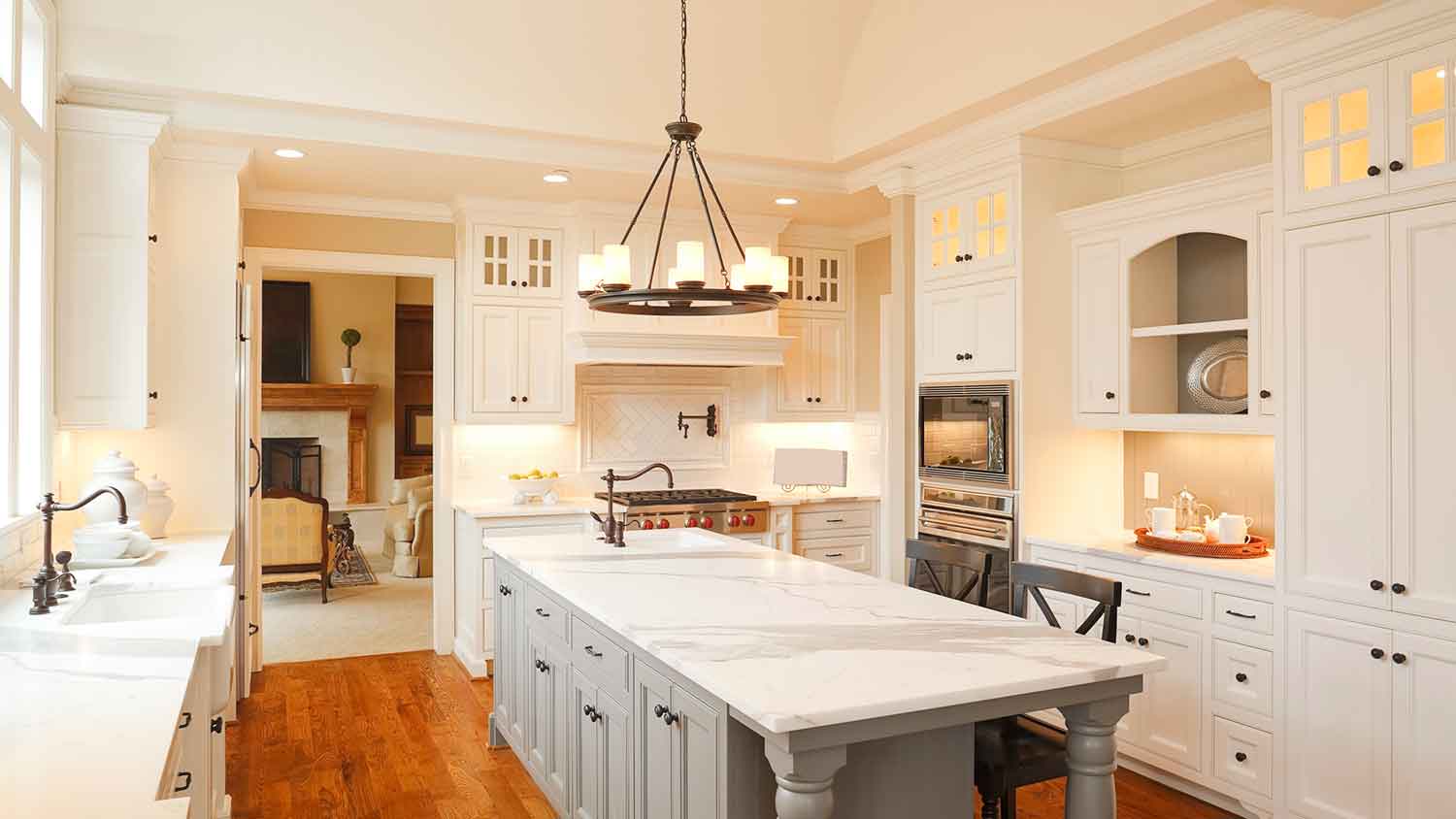
Crown molding provides a timeless style to your space. Learn how to install crown molding on your cabinets to give your home a simple but impactful upgrade.
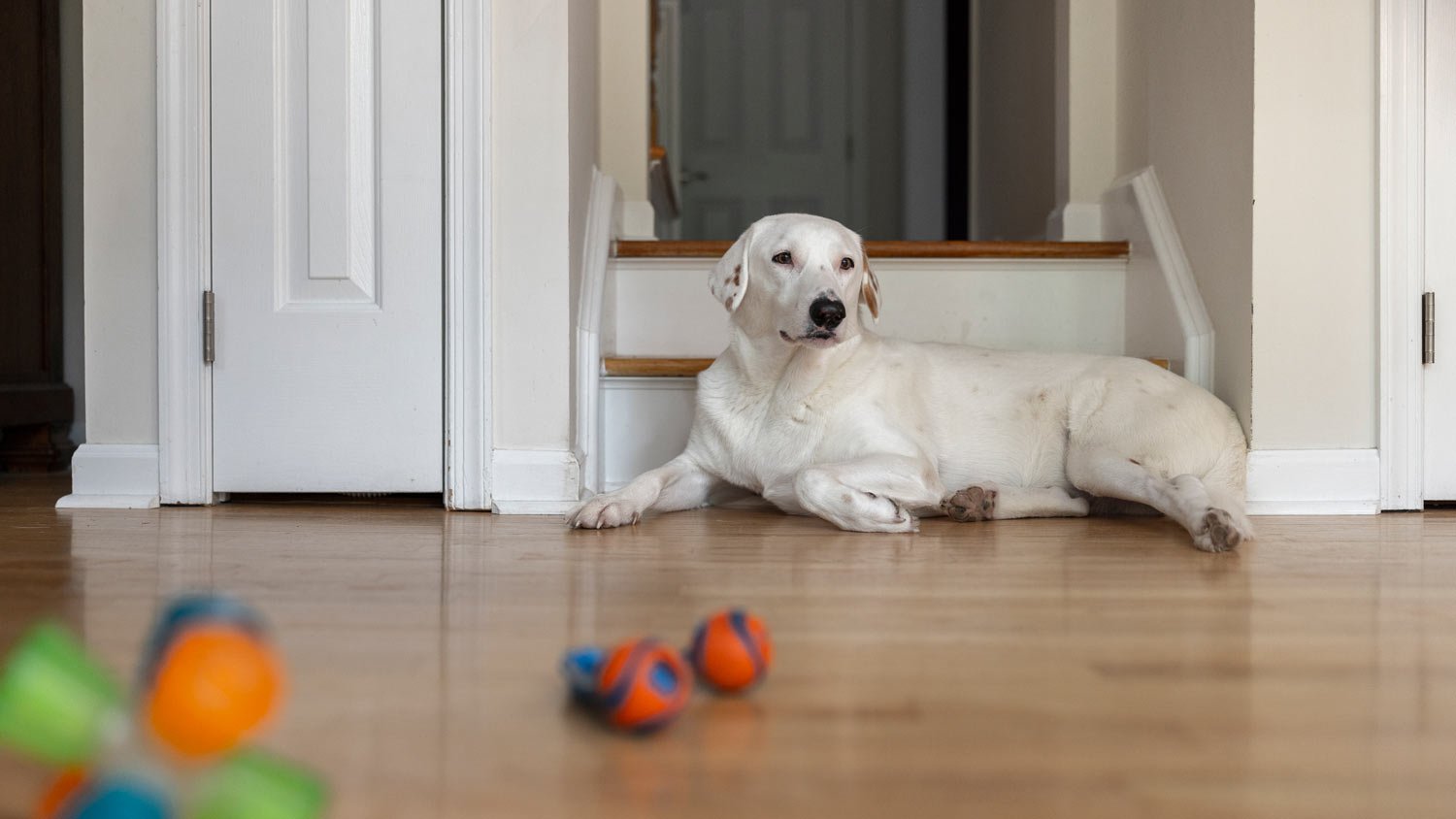
Have your baseboards fallen victim to your dog’s teeth? Learn how to repair dog-chewed baseboard casing to keep your trim looking brand-new.